Soaking lean meats in a salt water solution is so easy and it makes such a difference! Here’s how to brine.
You’ve probably heard of brining, and maybe you’ve even done it with your Thanksgiving turkey. But brining is a great idea for all your favorite lean meats, like chicken breasts and pork chops. Why? Because it helps make them both juicier and more flavorful!
Let’s take a closer look at this simple kitchen trick.
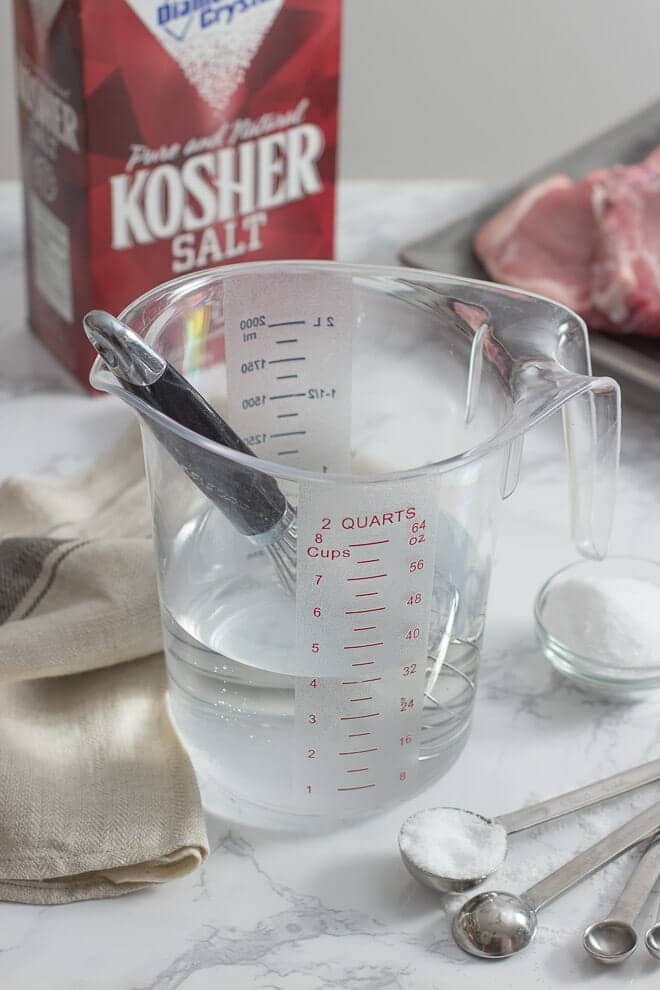
What Is Brining?
It’s simply soaking food in a salt water solution. Sometimes for extra flavor, you might add other ingredients, like sugar, herbs, or spices. But all you really need for a brine is salt and water. (Of course, you could also dry brine – read about that method here. Dry brining is actually a bit simpler than traditional wet brining, and is much more convenient for large pieces. I wholeheartedly recommend that you try dry-brining a turkey, for instance. Here’s how.)
How Does Brining Work?
One, the meats that you’re soaking absorb the brine, making them more moist and juicy. All meat loses liquid during cooking, but since brined meats start out with more, they end up with more, too.
And two, brining dissolves some of the meat’s muscle fibers. The technical term for this is denaturing. But don’t worry about that. The important thing is it literally turns some of the solids into liquid, enhancing your experience of moisture.
The additional moisture makes your meat juicier. The fact that the moisture is salty makes it more flavorful. Win and win!
What Meats Should You Brine?
Because the benefits are juiciness and flavor, the best meats for brining are lean meats, because with less fat they tend to dry out and also to have less flavor. Enter brining the Thanksgiving turkey.
But also – you can brine pork chops, pork loin, and pork tenderloin. Chicken breasts (learn the best way to brine them here) or whole chickens, and even brined chicken thighs for the best flavor. And some people even brine shrimp, including me!
On the flip side, beef and lamb are not good candidates for brining because they’re fattier and they can be enjoyed rarer than chicken or pork. Both those things mean they cook up juicier and more flavorful by default.
How To Brine
See my recipe below for a basic brine solution. It’ll make enough for 4 pork chops, 4 chicken breasts or 2 pork tenderloins. If you’re making something bigger, just double, triple, or quadruple the recipe! The recipe also tells you how long to brine the different cuts.
Note that the amount of salt in the recipe depends on what kind you’re using—Diamond Crystal kosher salt, Morton’s kosher salt versus any kind of finely ground salt like table salt. Personally, I like kosher salt because it dissolves easily, but any kind will work.
As for additional ingredients, I’ve found that sugar can make a nice difference, but adding herbs and spices makes a very mild difference at best, except if you go through some extra steps to add that flavor. A lot of turkey brines, for instance, will have you boil the water with aromatics before adding the salt. That infuses the water with flavor. However, I have found a much easier and more potent way to add flavor to a brine. For my Best Turkey Brine Recipe, I discovered that putting cold water and salt in a food processor with raw garlic, onion, and fresh herbs creates a flavorful slurry that really adds flavor to the poultry.
Can You Freeze Brined Meats And Poultry?
Yes! You can brine your meats and then freeze to be cooked at a later time. Brine the meat for the recommended time, drain the excess brine, and store in the freezer. The brine gets suspended in the meat as frozen water droplets.
I suggest using the meat within six months, after that there is a chance that the ice crystals will affect the texture of the meat, especially thinner cuts. The meat could also start to take on odors from the freezer.
Podcast Episode: Brining Meats
Listen to learn how to make this recipe, along with some great tips from Christine:
Listen to more Recipe of the Day episodes here.
Print
How to Brine Recipe
- Prep Time: 4-24 hours
- Cook Time: 0 minutes
- Total Time: 0 hours
- Category: Entrée
- Method: Brine
- Cuisine: American
DESCRIPTION
Soaking lean meats in a salt water solution is so easy and it makes such a difference! Here’s how to brine.
Ingredients
- 4 cups cold water
- Salt (6 Tbsp. Diamond Crystal kosher salt OR 4 and 1/2 Tbsp. Morton’s kosher salt OR 3 Tbsp. table salt)
- 2 Tbsp. brown or white sugar (optional)
- Lean meat for brining
- Optional ingredients: peppercorns, juniper berries, rosemary, thyme and/or sage sprigs, bay leaves, allspice berries, whole cloves, star anise, other favorite herbs and spices
Instructions
- In a large nonreactive container, combine the water, salt and sugar (if using), stirring to dissolve the salt and sugar.
- Transfer to a resealable bag, add the meat and any optional ingredients and seal the bag, squeezing out as much air as possible.
- Set aside in the refrigerator for 1-2 hours for: chicken breasts, 1-inch thick pork chops, and pork tenderloins; for 4-6 hours for a whole chicken or a turkey breast; 6-8 hours for a pork loin; 12-24 hours for a whole turkey.
- Remove the meat from the brine, pat it dry, and proceed with your recipe.
Notes
Note: This recipe makes enough brine for 4 pork chops, 4 chicken breasts or 2 pork tenderloins. Double, triple, or quadruple the recipe for bigger cuts or larger batches.
This post originally appeared in May 2018 and was revised and republished in October 2021.


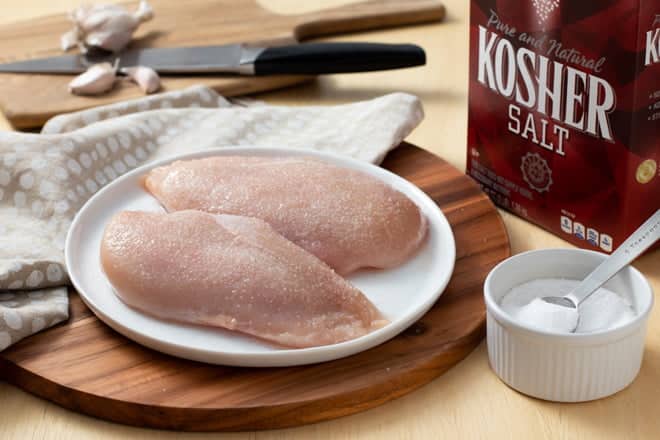
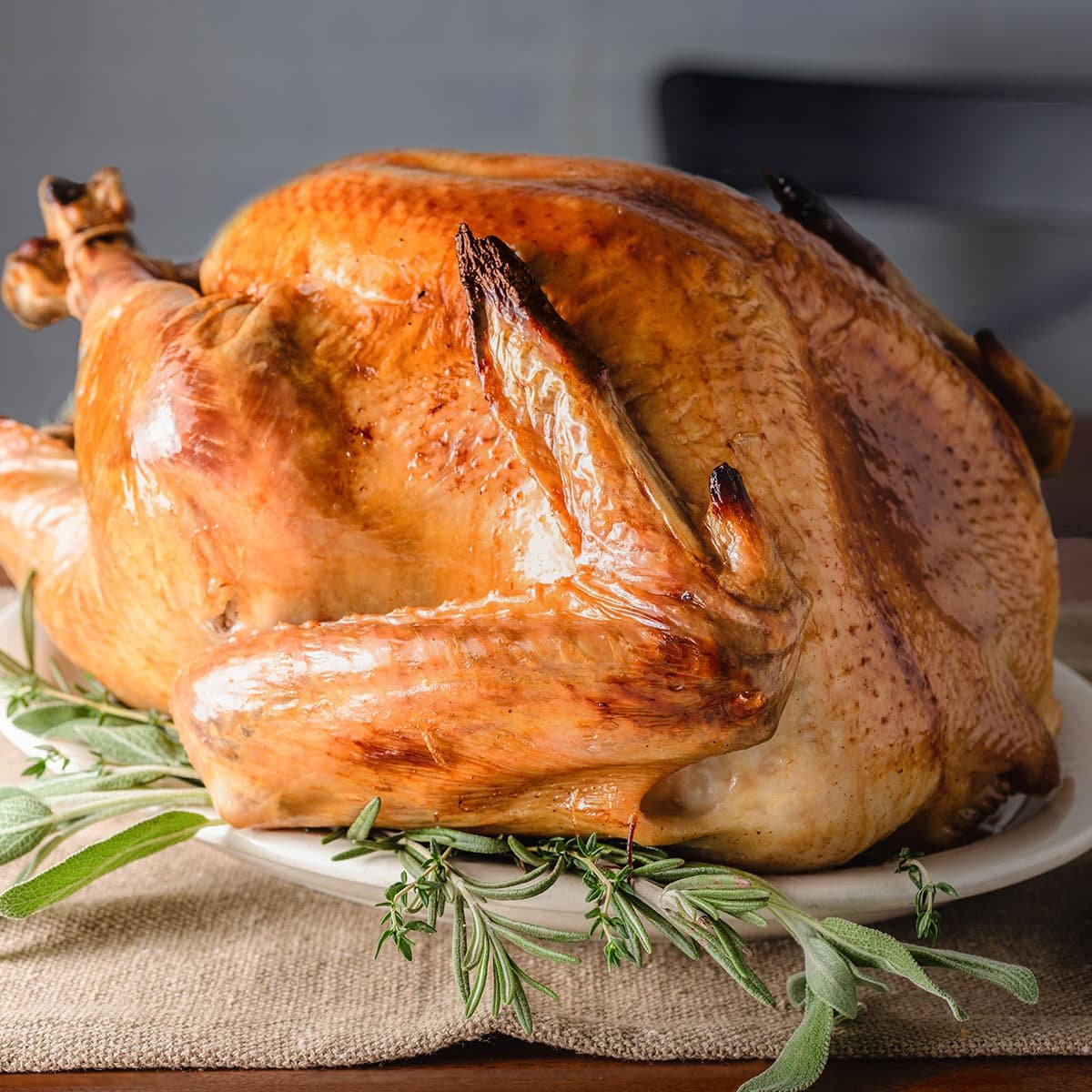
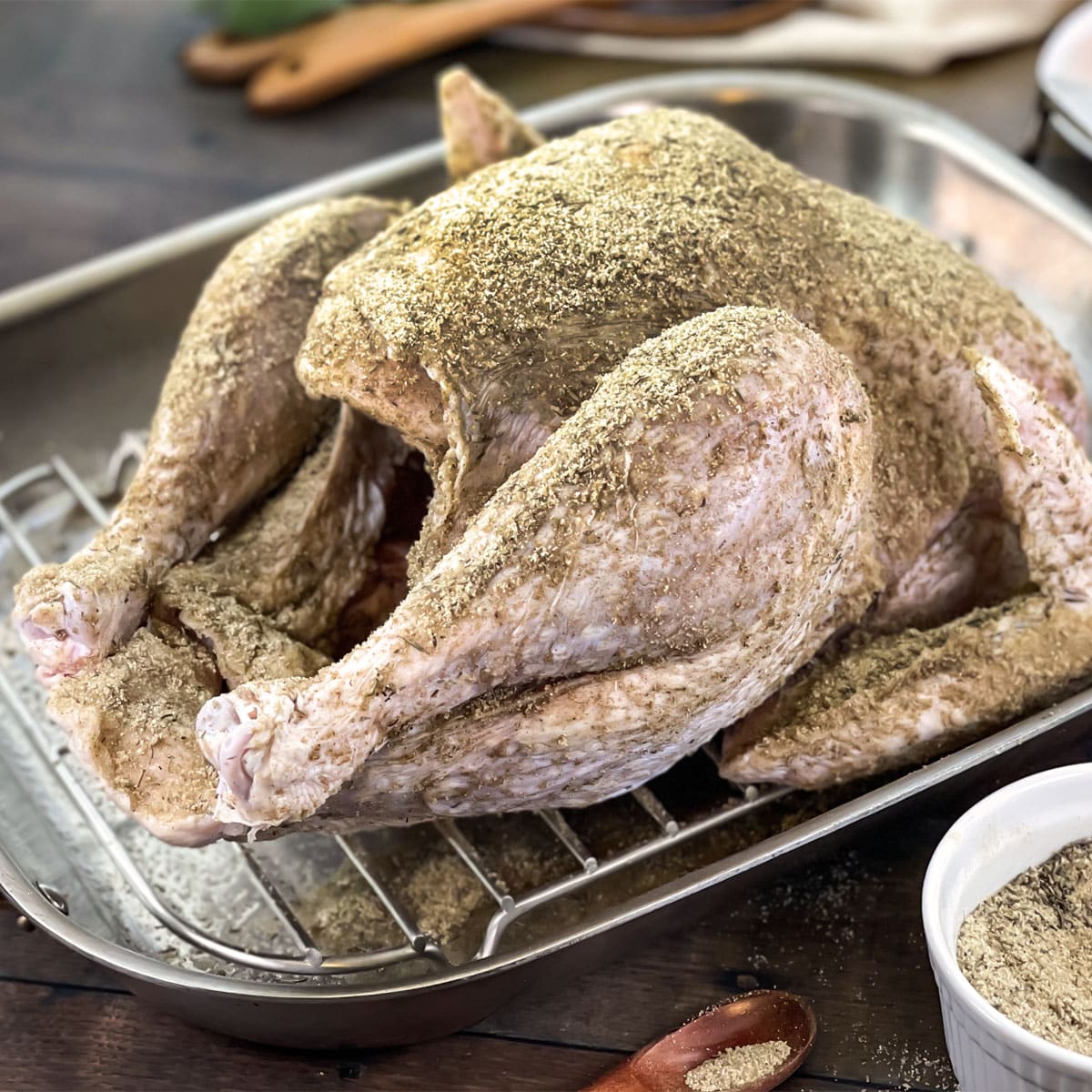
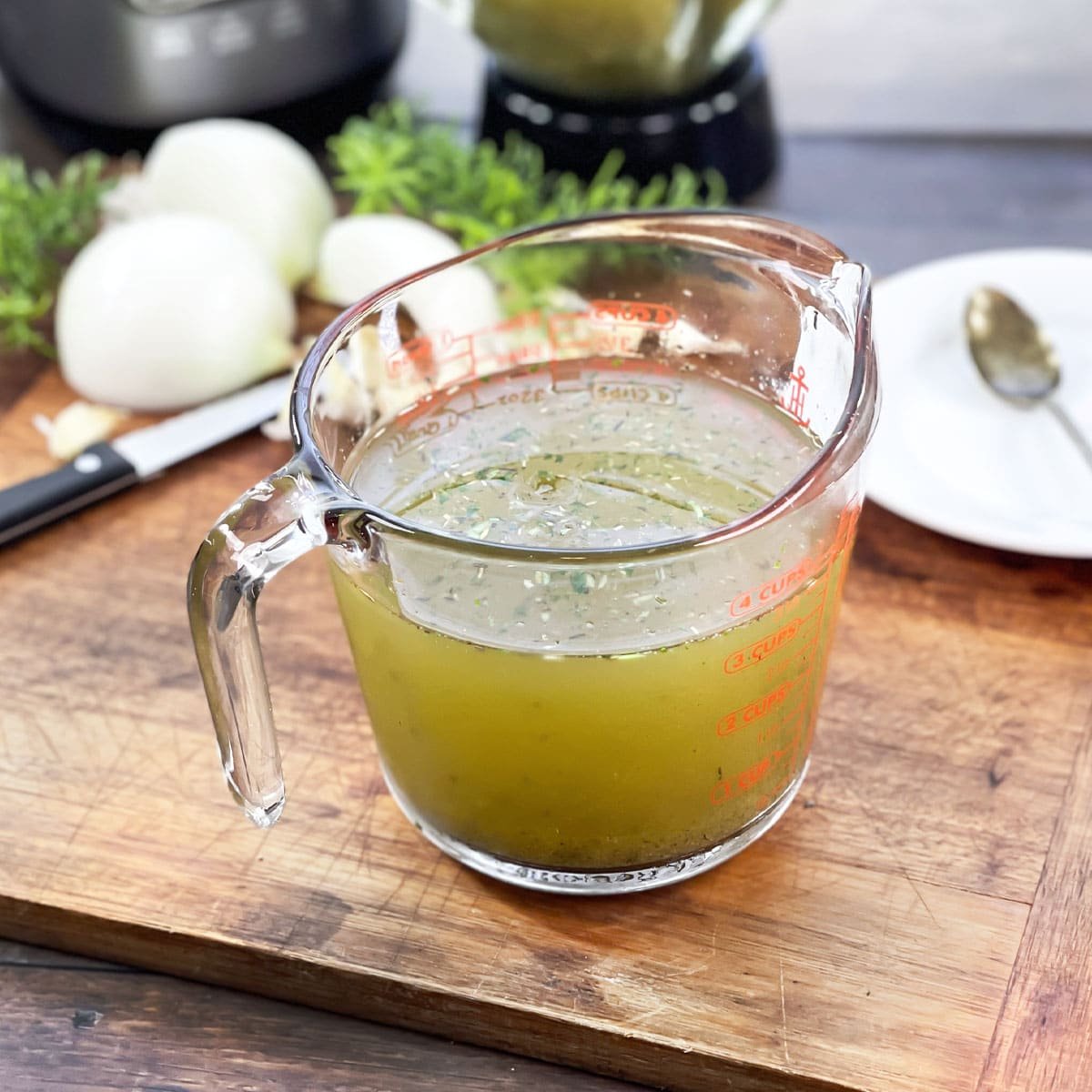



















Enjoy, Charlett!
Im sso sorry to say that ive tried this brining recipe with one whole chicken, after 6 hrs i cooked and the result was so salty and bitter. Maybe i could recommend to reduce the amount of salt. Thanks
Can you brine beef roasts? What exactly does adding the sugar do for the brine? My son bought a roast that has hardly any fat on it and I know it will be tough.
Katherine, it is not typically recommended that you brine beef roasts. That has to do with the typical cooking temperatures and the fact that the kind of beef cuts that you dry roast are tender enough. However, you could try it. Certainly, the roast beef that you buy at the deli counter is brined. Having said that, I have had wonderful success dry-brining beef (steaks and roasts). We have instructions for how to do that over here – https://cookthestory.com/how-to-dry-brine/
This worked AMAZINGLY WELL!!!! I defrosted half a ham and wanted to brine it before smoking. All I could find was “wet curing recipes” and then I found this page. I bribed my ham for a little over 24 hours and read thoroughly through the recipe, and I worked wonderfully. I had also defrosted some pork chops and I poured the ham brine into a bowl and brined the pork chops in that same brine for 8 hours and bbq’ed them on a coal grill, and I am not exaggerating BEST PORK CHOPS I have ever had. We have a freezer full of County Fair pork chops and they have been relegated to crock pot pulled pork because I don’t like pork chops. They are always dry, but this brine has salvaged pork chops for me. I now actually look forward to bbq’ing more chops! Thank you so much. I read the other reviews on here, the naysayers, and I believe that’s from not watching how much of what kind of salt one uses. I didn’t have enough kosher salt so I ended up liking 2 tbsp of kosher with table salt at the recommended portion accounting for what I had added, and rinsed immediately after removing from the brine, and everything, ham, pork chops, everything was amazing!
Thank you so much for sharing your experience with us, Robert! Sounds delicious.
great info i brine with mortin salt only difference i use half the water and outher half sweet wine ,little sage great try it thanks for info
You’re welcome, Kenneth!
Do you pound out chicken breast before or after the brine?
Brandon, you can do it either way. If you pound it first, it will need less time in the brine. Leaving it for the full time won’t hurt it though. I have never tried pounding them after but I think it will be easier before just because everything is less wet and less full of juice.
I’ve been brining for a while. For chicken breasts or pork chops 1 to 2 hours is best. Rinse after brining. Forget about adding spices, as they are oil soluble and adding them to water gets you nothing! Also, look up dry brining, especially for chicken. Works great!
Thanks for your feedback, Chuck! We’ll actually have a post on dry brining coming up next month. Yum!
Can you grill 2 hours after bringin?
What kind of meat are you preparing? The length of time for the brine we suggest are 4- 6 hours for chicken breasts, 1-inch thick pork chops or pork tenderloins, 8-12 hours for a whole chicken or turkey breast, 12-24 hours for a whole turkey or pork loin.
Great now we can make our own brine and we don’t have to buy premade brine anymore, Also this brine has enhanced flavours as well thank you very much for writing this.
I would like to add to my previous comment:
The brine recipe specifies Diamond Crystal Kosher Salt. Coincidentally, I had watched the “Salt, Fat, Acid, Heat” series on Netflix that very day. In the episode on Salt, Samin Nosrat talk specifically about the difference between Diamond Crystal Kosher Salt and Morton Kosher Salt in one scene. She says that Morton brand is twice as salty as D.C. per volume due to different crystal structure (or some reason like that). Guess which brand of kosher salt I used; Morton Kosher Salt. So, I really don’t have an excuse, I was explicitly warned of this exact issue by a professional chef.
So, could you possibly amend your brine recipe to include measurements by weight? Perhaps that might help prevent others from making the same blunder.
Yes, the type of salt does matter! We specify 6 Tbsp. Diamond Crystal kosher salt, 4 1/2 Tbsp. Morton’s kosher salt or 3 Tbsp. fine or table salt. Did you use 6 Tbsp or 4 1/2 Tbsp of Mortons? Thanks for info and reference, Jeremiah!
I wish I had read the comments, I tried this with chicken breasts and they turned out inedible, way too salty, and they were huge chicken breasts. Cut the salt and or time by half.
I would like to try and brine a pork loin roast that I plan to spiral cut. Do I cut it first and then brine it? Or should I brine it whole? If the former, are there any adjustments to the recipe above that I should make? Lastly, I am glad to have found your website; I find your explanations very simple and easy to follow – thank you!
You can brine it before or after cutting it, Mimi. It will need less time in the brine if you cut it first. No, you don’t have to make any adjustments to the brining recipe. However, for whatever pork recipe you’re following, you won’t want to add any salt. Thank you for the kind compliment. I’m so happy you found my site! I do a lot of little videos and explanations on facebook that don’t end up here. If you’re interested in those, you can follow me here – https://www.facebook.com/CookTheStory/
Hi. I haven’t tried this yet, but intend on it. With the chicken breasts coming out too salty, does the size of the chicken breast matter? I’m just thinking if the chicken breast cut is small, this might affect the saltiness. Curious to know your thoughts. Thank you!
No, don’t cut down on the salt, Shannon. You need the same proportion for the brining to happen. You can, however, cut down on the amount of time that the meat stays in the brine! Also, try rinsing the chicken after it’s been in the brine. Finally, don’t add salt while cooking.
I brined two chicken breasts using your proportions. WAY too much salt. I rinsed the salt off, patted them dry, cajun- spiced them, grilled them perfectly and after about three or four bites of several different pieces, I threw them in the wastebasket and made some burgers. I’ve seen a couple other recipes on different websites, same ratios. And I never have been sold on brining anyway. But this was off the scale.
Jim, the only ways I can think of that this would be inedibly salty are if you didn’t use the right amount for the type of salt (for example, if you use fine or table salt, but use the amount recommended for kosher salt the brine would be way too strong – table salt, by volume, is twice as salty as kosher salt), or if you left something in the brine for longer than recommended (although my guess is that would make for a worse texture more than a markedly bad taste, but maybe it’d have a big effect on taste too).
A third possibility is that after brining, you don’t want to use as much salt in a recipe as the recipe calls for. For example, if I brined a pork tenderloin, and then made a recipe with it that called for 2 teaspoons of salt, I probably would only use 1/2 or 1 teaspoon. So if you used a Cajun seasoning on the brined chicken, and that seasoning had salt, it could make the chicken too salty.
Let us know if any of those could have been a problem and maybe it will help others as well!
Can u marinate for an hour after brining time is done to add flavor?
Yes Terry, you can marinate after brining. But the easier thing to do is to add flavor ingredients to your brine. These will also transfer to your meat as though it has been marinated. Enjoy!
When using juniper berries, do you crush them or use them in the brine whole?
Thanks for your question, Marilyn! You’ll want to gently crush the juniper berries for the brine.
You shouldn’t use sugar in a brine.
A sugar molecule is 36 atoms wide a salt molecule is 2 atoms wide.
The sugar is much to large to absorb into the meat.
Here is an experiment you can do:
Make some salt water and add green or blue food coloring. Then make some sugar water and add green or blue food coloring.
Put 2 chicken breasts in two bowls and add the salt and sugar mixtures. Cover and place in the fridge overnight.
In the morning remove the two chicken breasts and cut them open on a cutting board. You’ll see that the salt water solution has penetrated throughout the meat while the sugar water hasn’t even broken the surface.
After doing the brining process. Do I still need to wash the meat? Would it be have salty taste?
Yes, rinse after brining and then pat dry. Don’t salt the meat after that. Good luck, James!
I use a clean cooler.
This is a great idea, especially when brining something large like a turkey. Just use lots of ice or ice packs and keep it at 40F. Great idea! Thanks, Frank!
Where do I get a ziplock big enough for a 12 lb turkey??
There are instructions on how to brine a turkey (in a big cooler with lots of ice) over here https://cookthestory.com/how-to-roast-turkey-perfectly/ . Good luck!